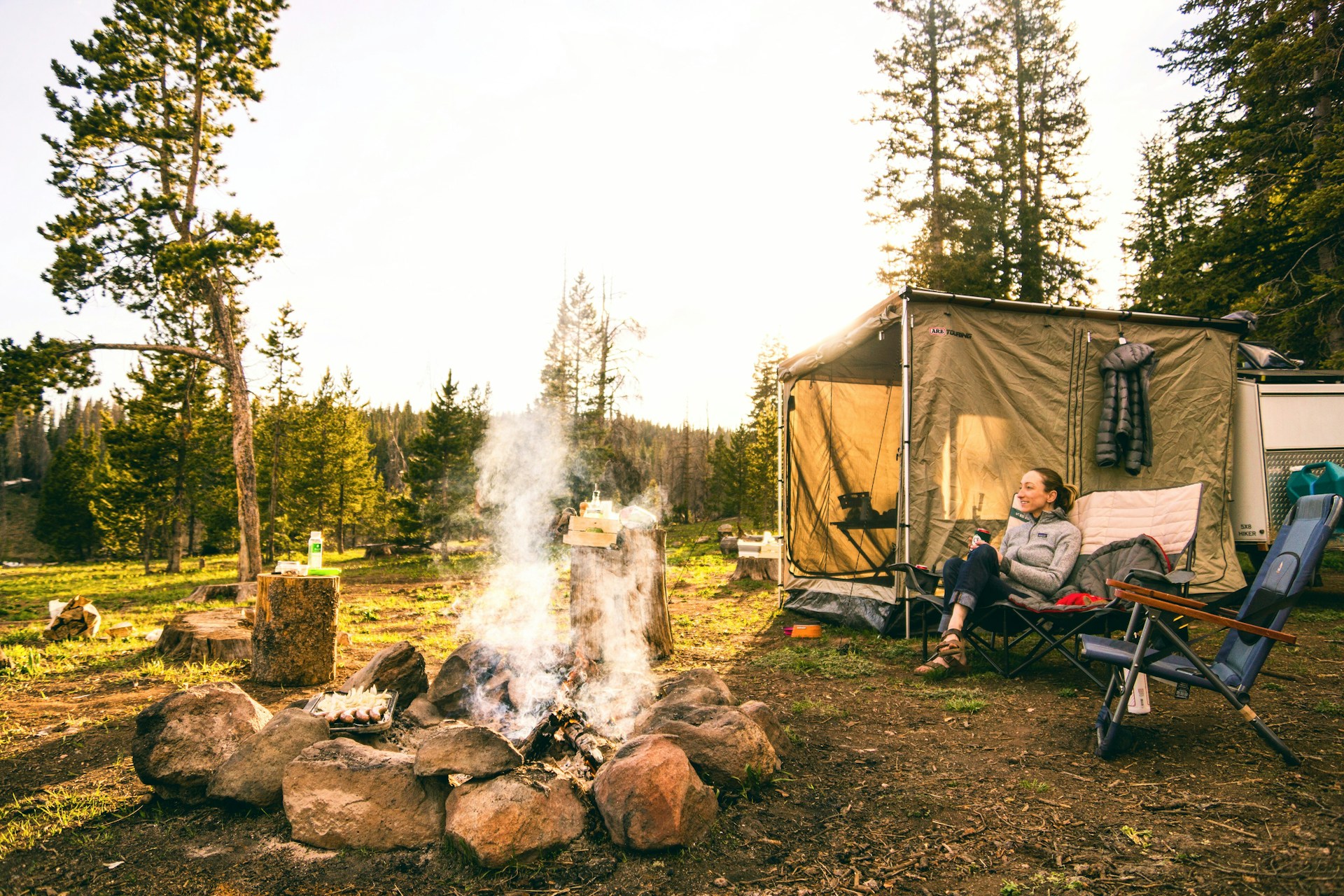
What are the signs of wildlife disturbance to be aware of while camping in UK forests?
Camping in the heart of nature is a thrilling experience. Sheltering under the stars, surrounded by the soothing rustle of the towering trees and the gentle melodic hum of wildlife. However, as much as you are captivated by the beauty and serenity of the wild, it is crucial to remember that you are a guest in wildlife's home. As campers, you hold a responsibility to minimise disturbance to the wildlife and habitat. An important part of this is being aware of the signs of wildlife disturbance. This article will guide you through identifying these signs while camping in UK forests.
The Importance of Minimising Wildlife Disturbance
Before delving into the signs of wildlife disturbance, it's crucial to understand why it's so important to keep disturbance to a minimum. By invading their space, we can unintentionally disrupt their natural behaviours and patterns, resulting in stress and potential harm to the animal and its habitat.
A lire également : How to pack efficiently for a multi-week camping and hiking trip across the UK?
National parks and other protected areas often have rules and regulations in place to protect wildlife and their habitats. These rules often include restrictions on public access to certain areas, especially during breeding seasons or times of day when wildlife are most active. Despite these precautions, active human presence, traffic and noise can still cause disturbance.
Failure to adhere to these rules not just harms the wildlife but can also spoil the experience for other campers. Therefore, it's in everyone's best interest to keep disturbance to a minimum and leave no trace when camping.
A lire aussi : What are the ideal lightweight cooking stoves for backpackers in the North York Moors?
Recognising Signs of Disturbance
While camping in the wild, it's important to be vigilant and notice any signs of wildlife disturbance. The signs can be physical, such as damaged vegetation or disturbed nests, or behavioural, like sudden changes in an animal's activity or vocalisations.
Often, human traffic and noise can cause animals to leave the area. If you notice a sudden absence of wildlife where there was once plenty, this could be a sign of disturbance. Animals might also respond by changing their usual patterns of behaviour. For example, prey species might become more vigilant and less likely to forage, while predators might become more aggressive in defending their territory.
Other common signs include displaced nesting materials, damaged flora, or wildlife appearing unusually tame or aggressive. All these signs point towards a possible disturbance in the natural balance of the area.
Effectively Minimising Your Impact
Now that you are aware of the signs of wildlife disturbance, the next step is to take measures to minimise your impact. It's important to remember that you are visitors to the forest and should always strive to leave no trace.
Keeping noise levels to a minimum is a must. Avoid playing loud music, shouting or making unnecessary noise. Human voices and noises can scare away wildlife, forcing them to leave their habitats.
As campers, you should always stay on designated trails and avoid wandering into restricted areas. Unnecessary traffic in the wild disturbs not only the animals but also the vegetation and can lead to soil erosion.
When setting up your camp, choose a spot that's away from any animal trails or nests. Be sure to pack up and dispose of your waste properly to prevent attracting wildlife to your campsite.
Monitoring and Reporting Incidents
As responsible campers, you should not only strive to minimise your impact but also monitor and report any signs of wildlife disturbance. If you notice any signs, it's important to report them to the park authorities so they can take appropriate action.
Many national parks and wildlife agencies have hotlines or online forms where you can report incidents. Providing as much information as possible, such as the location, time, and nature of the disturbance, will help authorities take the necessary steps to protect the wildlife and prevent further incidents.
In conclusion, being aware of and minimising wildlife disturbance is not just beneficial for the animals but also enriches your camping experience. It allows you to enjoy nature in its most authentic, unspoiled state. So next time you plan a camping trip, remember to be respectful guests in the wildlife's home and do all you can to minimise your impact.
Sensible Approaches to Wild Camping
Wild camping is an immersive and exciting way to experience the UK's forests and wildlife. However, to ensure this experience doesn’t negatively impact the very nature you’re enjoying, it’s essential to follow some key guidelines.
The UK’s Outdoor Access Code is an important guideline to follow while camping, particularly in Scotland’s outdoors. It helps campers ensure that they are not causing any disturbance to the wildlife. In England and Wales, open access lands and nature reserves often have specific guidelines for campers. These guidelines include staying on marked trails and keeping noise levels down. Moreover, camping is generally allowed on public rights of way, but permission from the landowner is advisable if you aren't camping on designated sites.
The use of a bivvy bag can also be helpful. A bivvy bag is a waterproof cover for a sleeping bag, ideal for wild camping. It allows for a minimal setup and reduces the impact on the environment.
Another tip is to avoid high risk areas, such as those populated by natural predators or areas close to road traffic. It's also important to refrain from engaging in recreational activities that could potentially disturb wildlife or harm the environment.
Respecting Protected Areas and Private Land
Respecting protected areas and private land is at the heart of responsible camping. In the UK, many forests and lands are protected due to their ecological significance. These areas are home to diverse species and habitats, and disturbing these areas can have serious consequences.
Adherence to the access code in areas like national parks and nature reserves is essential. However, even in areas without such guidelines, it's important to remember that being a responsible camper means being a respectful guest in nature.
When dealing with private land, the rules of wild camp may be different. Permission from the landowner is often necessary unless the area is designated as open access land. If in doubt, it’s always best to ask for permission. Not only is this the right thing to do, but it also ensures that you won’t be inadvertently causing any disturbance to the wildlife.
Wrapping Up
In conclusion, camping in the heart of nature is a privilege that comes with certain responsibilities. To preserve the tranquillity and the rich biodiversity of the UK's forests, it's important to be mindful of our actions.
By staying on designated trails, keeping noise levels down, respecting the access code, and avoiding sensitive areas, we can enjoy the beauty of the wild without causing unnecessary disturbance to wildlife. Remember, it's not just about following rules set by national parks or landowners; it's about respecting the home of the wildlife you've come to appreciate.
So, next time you plan a wild camping trip, remember to be conscious of your impact. Monitor your actions, be vigilant for signs of disturbance wildlife, and report any irregularities to the appropriate authorities. By doing so, you are not only protecting the environment but also ensuring that these beautiful forests can be enjoyed by future generations of campers.
